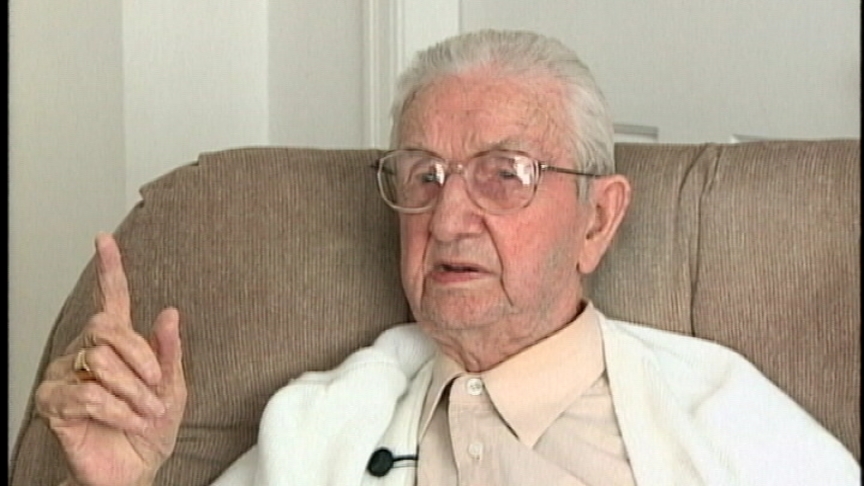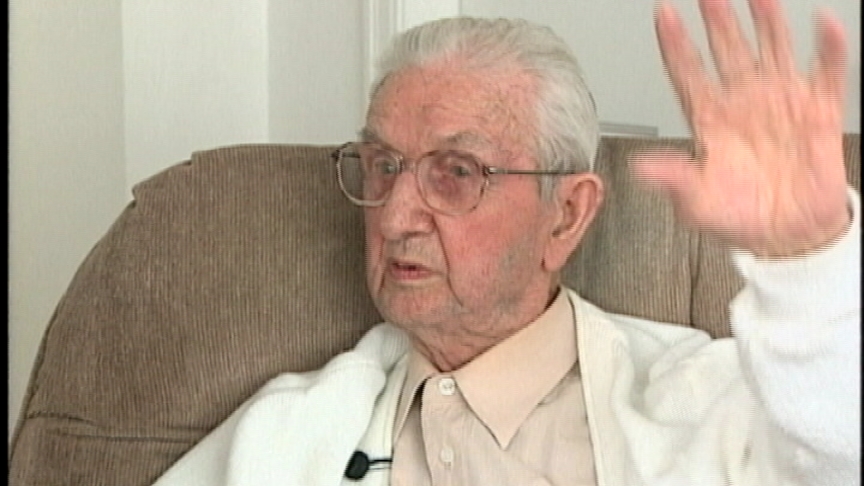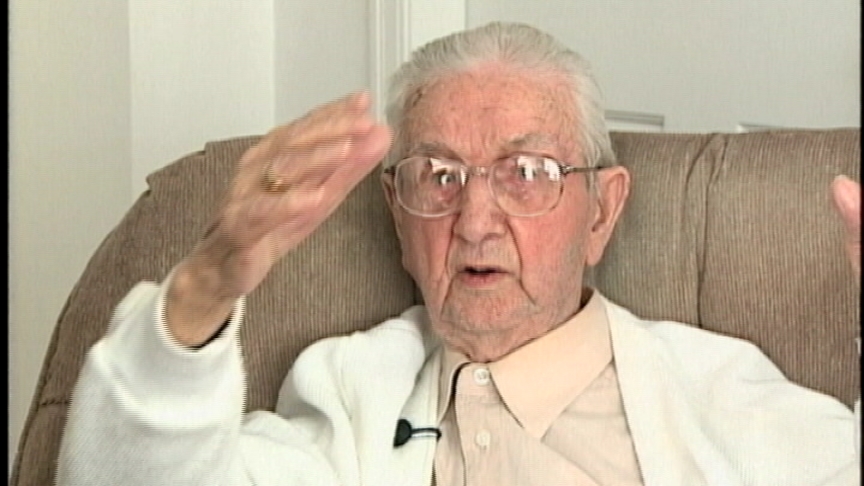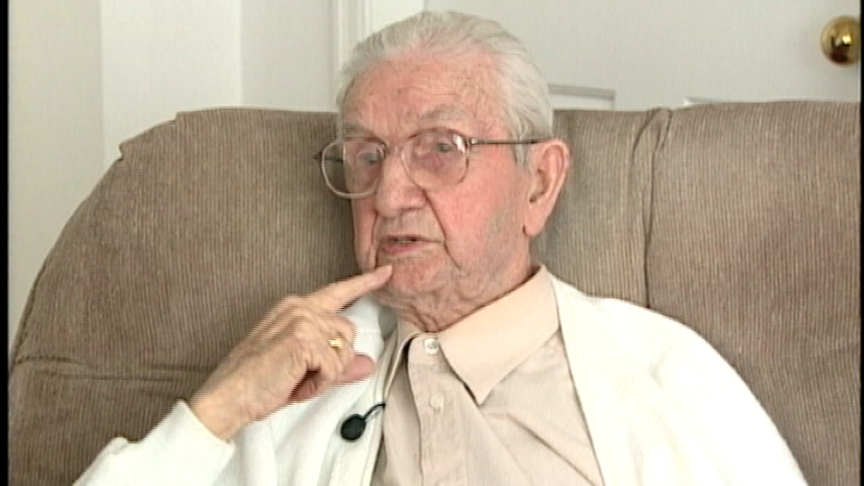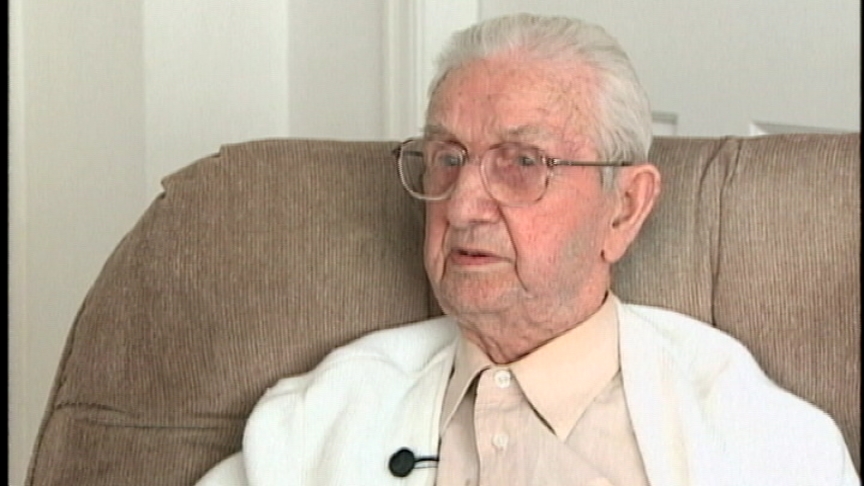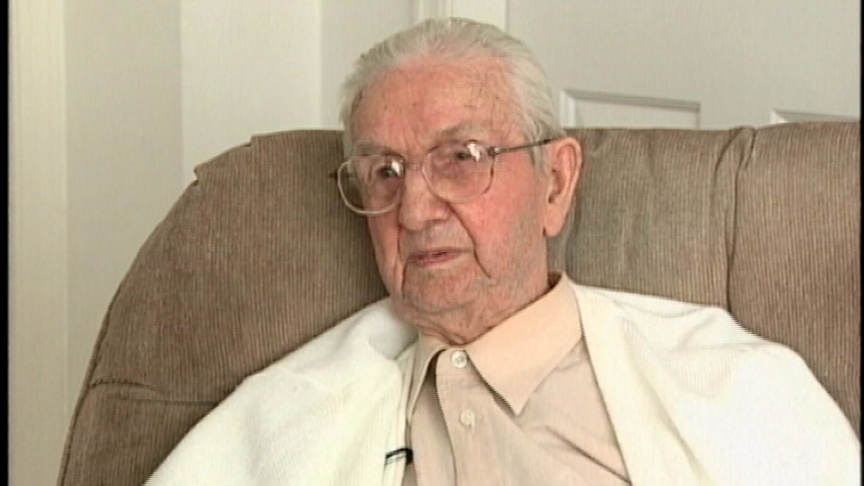I was a gunner and I was a, well, they were all gunners, but I
was a layer. I’m the one that pulls the lever that fires the gun
and I’m the one that sets the instruments. I was very good at
it if I do say so myself. Officially there’s seven men, but
actually we could run it with four men and we didn’t always use
seven men, but officially it was seven. But when we trained more
than, we always trained more than a double crew because you
had replacements and you had to have somebody else coming and
going. But we always trained, oh, there’d be at least fourteen
men on each gun and there was also the NCO in charge of it.
And then our, in the centre of the section was our officer,
one officer to each section. When things are inactive, you’re not
firing guns all the time. You’re just firing so many a day
and one gun is ample. Now, our sniping gun, one in particular,
we were in the same position for I’d say about three or four
months, and the Germans never did find us in that position. We
never had one casualty there, but the battery was further back.
They never located us, you see. And the sniping gun did all the
firing at night. That’s the firing they send in over the
phone every night … that anything that’s spotted through the day
anything they want to do, we would fire, usually around
twenty, twenty-five rounds, and it was left to us to set the gun
and fire them. Well, you see, our field gun was 3.3. It's a
light gun and the German field gun was a 4.1 This was a light gun
We called it a whiz gun. It wasn’t very effective. Our field
gun was much, much, much more effective than the German one.
But the German 5.9 was an old round gun. They used it for
everything and it was a very, very good gun. I would say it
was better than any of our guns. Now, in the trench
warfare we had a six inch gun,we had a 4.1, we had 9 inch howitze
we had 12 inch howitzers, we had trench mortars. The trench,
they were down ahead of us, the trench guns, yes, the trench
mortars. Now, the 9 and 12 inches, they were way back of
us. They were part of the artillery, but they were way out
of the line, and they were firing great distances. In the
open warfare they were useless. I don’t know whatever happened
to them, they just disappeared, I suppose. You see, then we had
the 4.1 howitzers with the field gun, because of the trenches,
you know. A howitzer goes up and they, of course, they were used
during the open warfare a bit, not as much as the others. Our
field guns had caused more casualties to the Germans than
anything, more than machine guns or anything else.
The artillery were the cause of more casualties. Now that’s not
generally accepted, and I didn’t think that was true until I read
it somewhere in some of the books that said that artillery caused
the most casualties and it would be the field gunners that would
cause most of it, to the Germans. But the German 5.9
was really a very good gun. Well, they had one or two big guns,
guns, of course. They had that big one that went 75 miles to,
into Paris, but we never saw that. But they had one or two of
these big train ones and every now and again we hear it go
overhead, over us into the back country somewhere. They were
probably trying to find something at the back. But we had the
same thing. But those guns took a long time to mount
and dismount, you see. And also, a howitzer took longer. We
could mount and dismount in two minutes and be gone. We went
into action and inside of a minute we could be firing.



